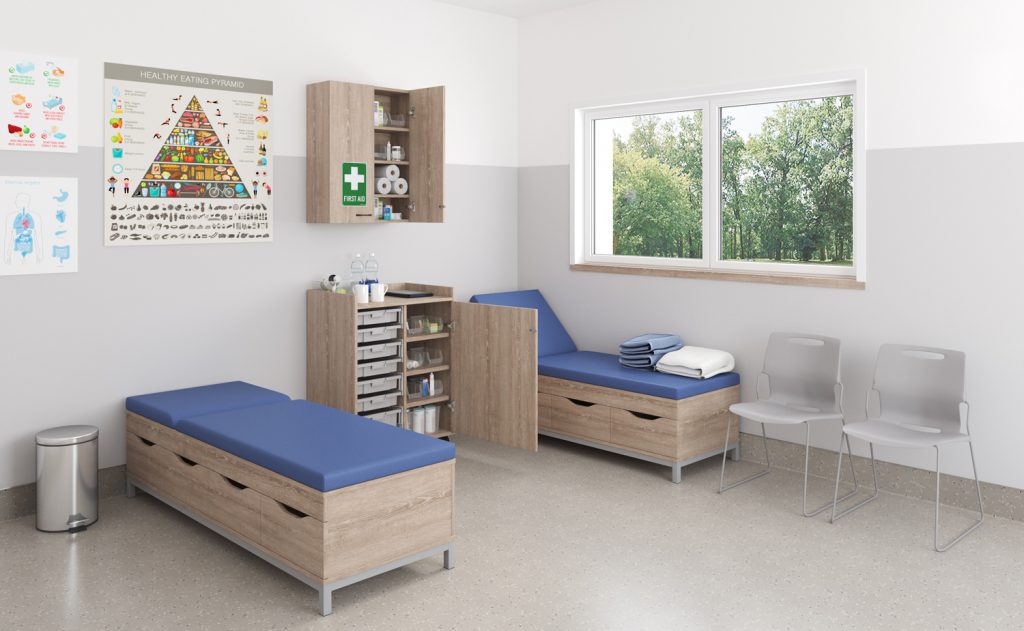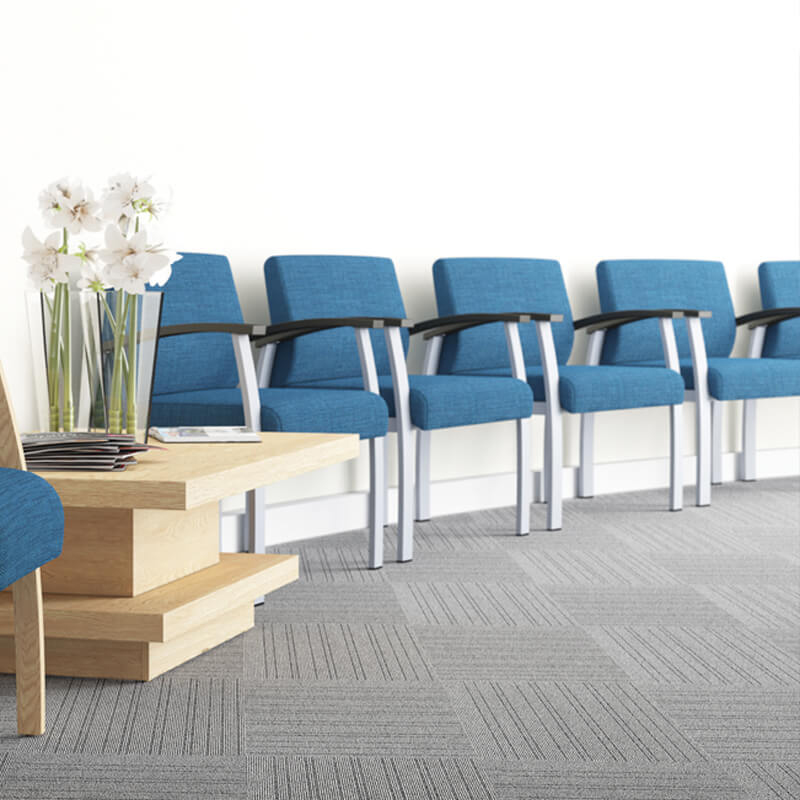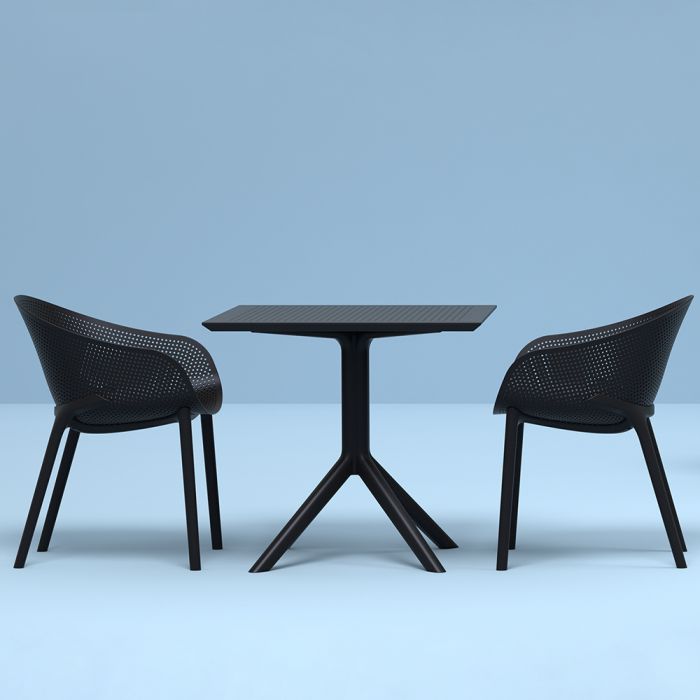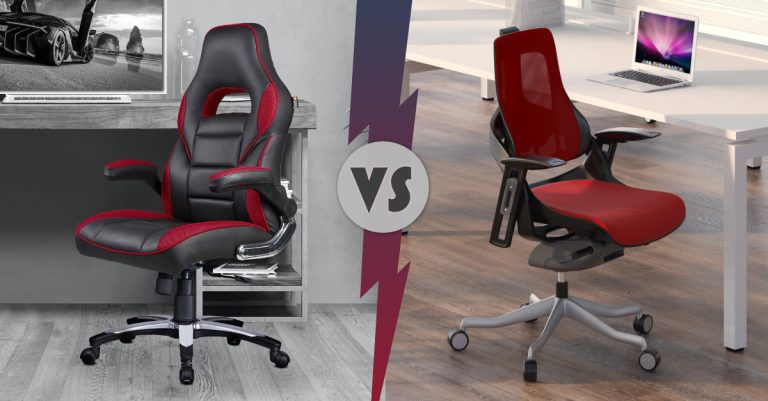6 Things to consider when buying healthcare furniture
Finding comfortable, durable, and fit-for-purpose furniture is vital for any workplace, but when it comes to healthcare settings where both patient and staff health is on the line, the right decision is even more imperative. Add to this the fact that new or refurbishment projects for healthcare settings like GP offices, specialists’ rooms and allied health clinics are complex and expensive. This makes choosing wisely vital to getting the most from your furniture investment. With many options available in the market, it can be hard to determine what features to focus on when purchasing healthcare furniture. As a guide, we suggest keeping these six considerations top of mind:
1. Furniture needs to be easy to clean and maintain
Infection control is a top priority, so choose materials, finishes and designs that make it easy to keep furniture clean and well looked after.
In their 2011 paper, Furniture Design Features and Healthcare Outcomes, The Center for Health Design suggests an Evidence-Based Design (EBD) Checklist for healthcare furniture based on current research findings and standards. The checklist follows several goals, and unsurprisingly, the top of the list is to “Reduce surface contamination linked to healthcare-associated infections”.
The easier the furniture is to maintain, the longer it will last.
How easy it is to clean and maintain healthcare furniture comes down to two factors: a) the materials it’s made of and its finishes, and b) the design of the piece itself.

a) Materials and finishes in treatment areas should be smooth, non-porous and able to withstand scrubbing and cleaning with industrial-grade cleaners and disinfectants. Where possible, choose surfaces like seats, beds and desksmade with materials that inhibit bacteria growth–powder-coated metal, vinyl, plastic, laminate –and/or treated with ananti-microbial agent. In waiting areas and consultation rooms, where furniture should be comfortable and aesthetically pleasing, upholstery should be non-toxic, dust mite-resistant, hard-wearing, fluid-proof (using moisture-guard technology), anti-microbial and flame retardant. BFX can show you a range of suitable fabrics that meet your décor and cleaning requirements.
b) Design should be as streamlined as possible with well-thought-out seams so that dust or bacteria can’t collect in tight, hard-to-clean spaces. This does mean that furniture design for healthcare settings is often more straightforward, sturdier and less refined than traditional office furniture offerings. However, innovative designers in this field are turning the tables to create a better balance between visual and practical needs.
The Association for the Health Care Environment offers some helpful cleanability guidelines.
2. Furniture should help create a positive, healing environment
The physical space – including furniture – is the first thing a patient sees and interacts with in a healthcare facility, significantly influencing the comfort of their experience.
A review of research into patient comfort found that comfort is multidimensional, and “experienced by patients as a sense of positivity and strength characterised not only by the relief (even if only temporary) of physical discomfort but an integration of positive emotions that include feeling confident, competent, having a sense of personal control, feeling cared for, valued, safe (able to trust) and at ease.”
Standard healthcare furniture like examination beds and hospital chairs can give patients a sense of physical comfort. However, a soulless or crowded space with dark, institutional furniture can induce fear, anxiety and ill feelings instead of reassuring a patient and facilitating a calm recovery.
Researcher Roger Ulrich published a paper calling for EBD in healthcare facilities on the basis that it can improve medical outcomes, stating: “There is a growing awareness internationally among healthcare administrators and medical professionals of the need to create functional environments that also have patient-centered or supportive characteristics that help patients cope with the stress that accompanies illness.”
Research and EBD frameworks are ongoing, however, healthcare providers can make a start by taking simple actions as per the EBD checklist, which includes having comfortable, attractive furniture in the waiting room configured into small groups to encourage social support from caregivers/family members to the patient, and using materials and colours reflective of those found in nature. Additionally, furniture – whether in a waiting area, consultation room or private bedroom – should be chosen to emulate a warm, homelike environment that promotes healing and allows patients to feel soothed during their recovery.

3. Furniture needs to meet the specific comfort needs of your patient population
It is important to consider the varied needs of patients depending on your facility. Understanding and addressing these needs will impact your furniture choices and your patient experience. An example of some patient specific furniture needs are:
- Dementia patients and those with vision impairments (limited eyesight, colour blindness) may have difficulty differentiating between items of the same colour so consider choosing furniture and flooring in contrasting colours.
- Children may feel more at home with the brighter colours they see at school or in kindergarten, and their furniture needs to be made from wipeable, durable materials like moulded plastic.
- In a single-type treatment setting such as a physiotherapy clinic, consider offering several options to suit different sizes and mobility needs, including bariatric seating, seats with adjustable heights and armrests, and padded seats and armrests for comfort.
- In maternity, hospice and paediatric settings, family members may be able to stay with patients overnight, so they could use a (comfortable!) convertible chair/bed option. Alternatively, families of small children may also need breastfeeding-friendly chairs beside beds.
4. Furniture should be flexible so you can adapt to change
The healthcare industry is continually evolving, influenced by the emergence of new research, technology, patient care models, architectural and design trends and sustainability mandates. Purchasing furniture that meets the needs of the space you have now, the demographic you currently serve, or the particular patient model you use could be expensive in the long run. We suggest taking a longer view that considers what your needs could be should you move premises, begin caring for new or additional patient groups, using a new treatment technology or adopting a new care model in the future.
You can embed flexibility into your furniture specification by setting a standard for the purchase and use of furniture that is:
- modular so it can be easily reconfigured (particularly for waiting areas)
- made from materials within a set colour and finish palette and in classic designs so that regardless of configuration or space, your décor remains consistent
- a high specification to ensure that it remains looking good and functioning well for a long time to come
5. Furniture selection needs to meet lifecycle costing targets
Setting a target for lifecycle costs not only keeps your capital expenditure budget in check, it helps you achieve long-term value from your investment. Too frequently, we find that this is overlooked in furniture purchases, and only the initial outlay is considered.
When analysing the total lifecycle cost of furniture purchased for a healthcare setting, whether it’s a waiting room chair, treatment bed or consultation desk, you’ll need to take into account:
- The original cost of the furniture, including warranties
- The impact of quality standards and testing, weight ratings and the durability of materials
- Transport costs and storage costs if the furniture is purchased before a project is completed
- The cost to employees if ergonomically correct furniture is/isn’t used
- The cost to patients (length and cost of treatment) if appropriate furniture is/isn’t used
- The cost to maintain the furniture – cleaning, re-upholstering, replacing worn components
- The cost of replacing the furniture
- The cost to dispose of furniture at the end of its life
Although a cheaper option may give you a lower up-front cost, frequent replacement and maintenance costs may outweigh the cost of purchasing a more expensive, higher-quality option with a higher weight rating, stronger upholstery, a more comprehensive warranty and more detailed specifications.

6. Furniture should be purchased from companies with solid project management
capabilities
Projects for large healthcare facilities like hospitals are complex, with dozens of patient room variations, treatment room types, education spaces and waiting and meeting areas. This requires planning and management by professionals skilled in scooping furniture specifications, furniture design and layout, delivery and fitting.
Do your research and speak to specialist furniture companies with a solid selection of high-quality healthcare-specific furniture and the experience and capability to fit out large, complex facilities. Not only will they be able to take care of a considerable task for your project, but they’ll also draw on their experience to make recommendations for furniture that meets your staff and patients’ needs and offers long-term value.
Let the experts help you navigate healthcare furniture purchasing
We suggest engaging experts like our team at BFX at the very start of your new healthcare project or refurbishment. Not only will this make budgeting simpler, a specialist furniture team can advise you on the best layouts, healthcare furniture combinations, materials and finishes for your needs. Get in touch today.













